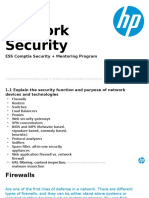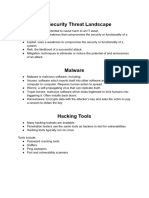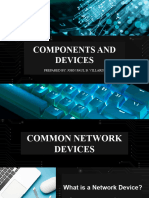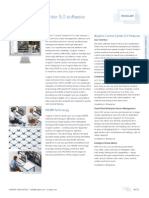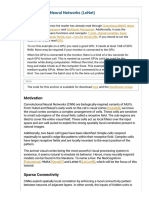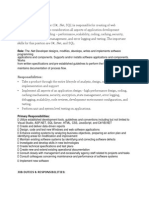0% found this document useful (0 votes)
203 views57 pages2 Cybersecurity Fundamentals Network Security
This document provides an overview of key networking and security principles:
1. It defines networking concepts like types of networks (LAN, WAN), networking devices (hub, switch, router, firewall), and network addressing (MAC, IP addresses).
2. It describes common networking threats like spoofing, phishing, DoS/DDoS attacks, and malware. It also outlines security measures to prevent threats like firewalls, intrusion detection/prevention systems, antivirus software, and regular vulnerability scanning.
3. It introduces networking models like OSI and TCP/IP and explains how protocols like IPv4, IPv6, TCP, and common ports (HTTP, SMTP, etc.) work and how to
Uploaded by
rafaelricardo2705Copyright
© © All Rights Reserved
We take content rights seriously. If you suspect this is your content, claim it here.
Available Formats
Download as PDF, TXT or read online on Scribd
0% found this document useful (0 votes)
203 views57 pages2 Cybersecurity Fundamentals Network Security
This document provides an overview of key networking and security principles:
1. It defines networking concepts like types of networks (LAN, WAN), networking devices (hub, switch, router, firewall), and network addressing (MAC, IP addresses).
2. It describes common networking threats like spoofing, phishing, DoS/DDoS attacks, and malware. It also outlines security measures to prevent threats like firewalls, intrusion detection/prevention systems, antivirus software, and regular vulnerability scanning.
3. It introduces networking models like OSI and TCP/IP and explains how protocols like IPv4, IPv6, TCP, and common ports (HTTP, SMTP, etc.) work and how to
Uploaded by
rafaelricardo2705Copyright
© © All Rights Reserved
We take content rights seriously. If you suspect this is your content, claim it here.
Available Formats
Download as PDF, TXT or read online on Scribd
/ 57


